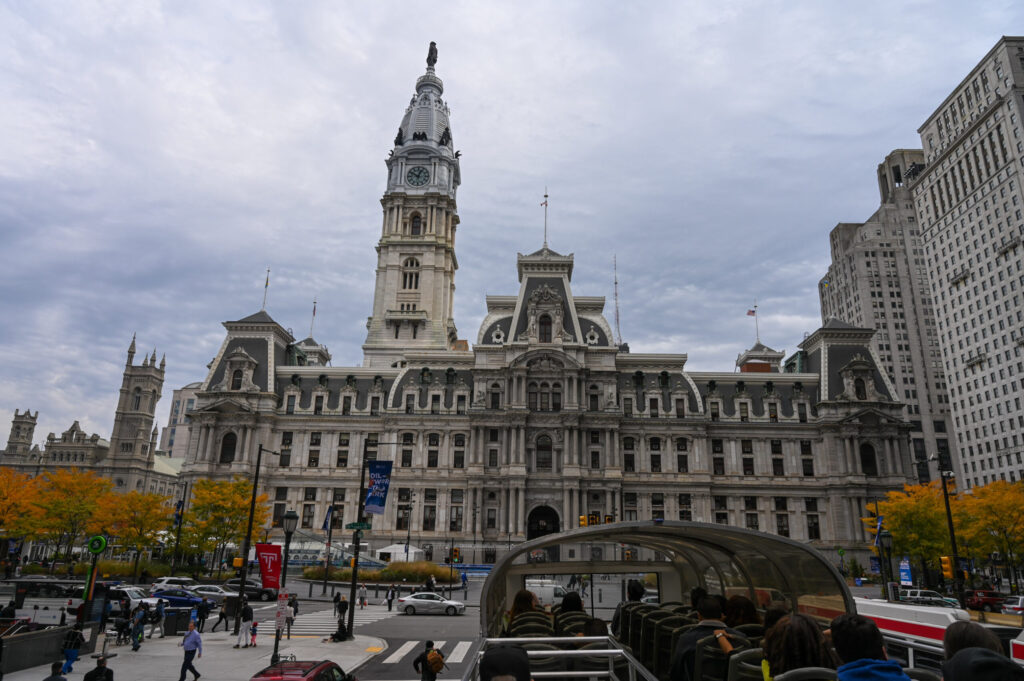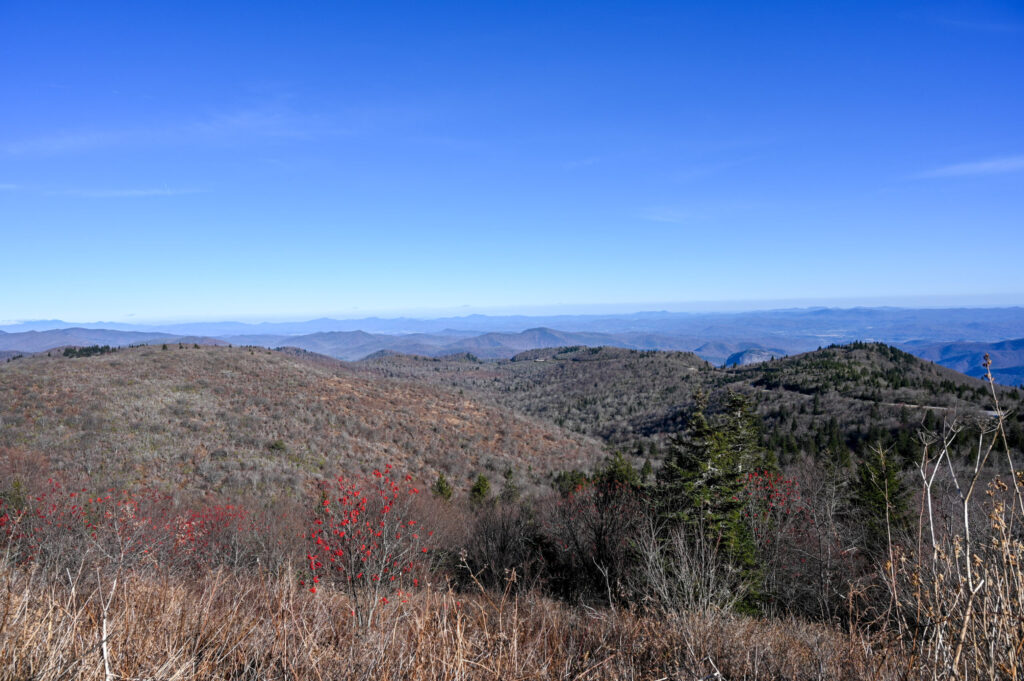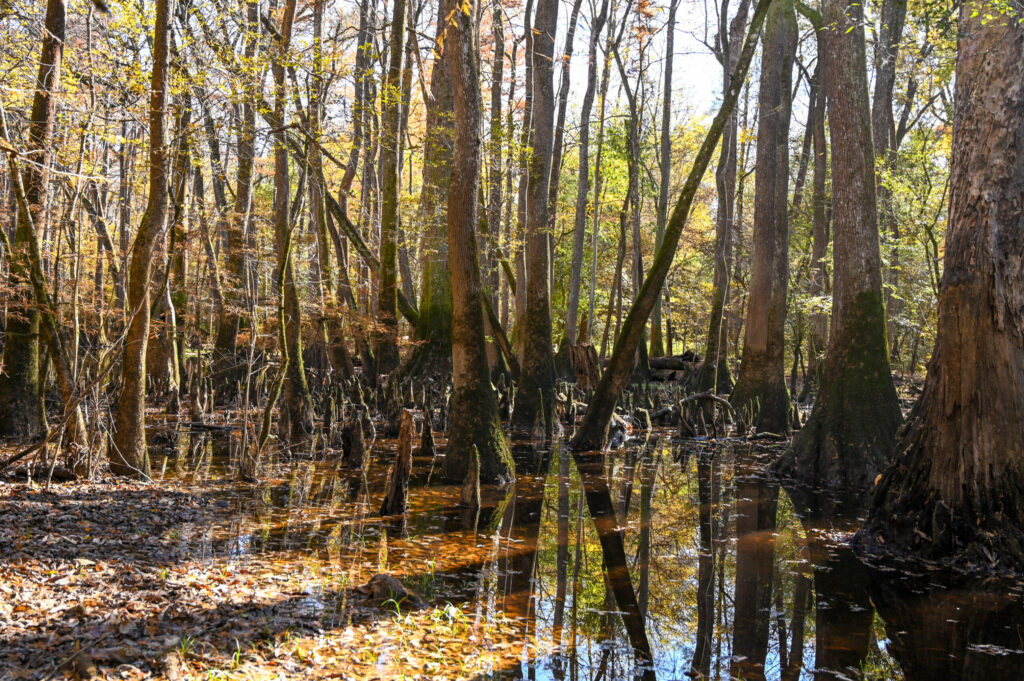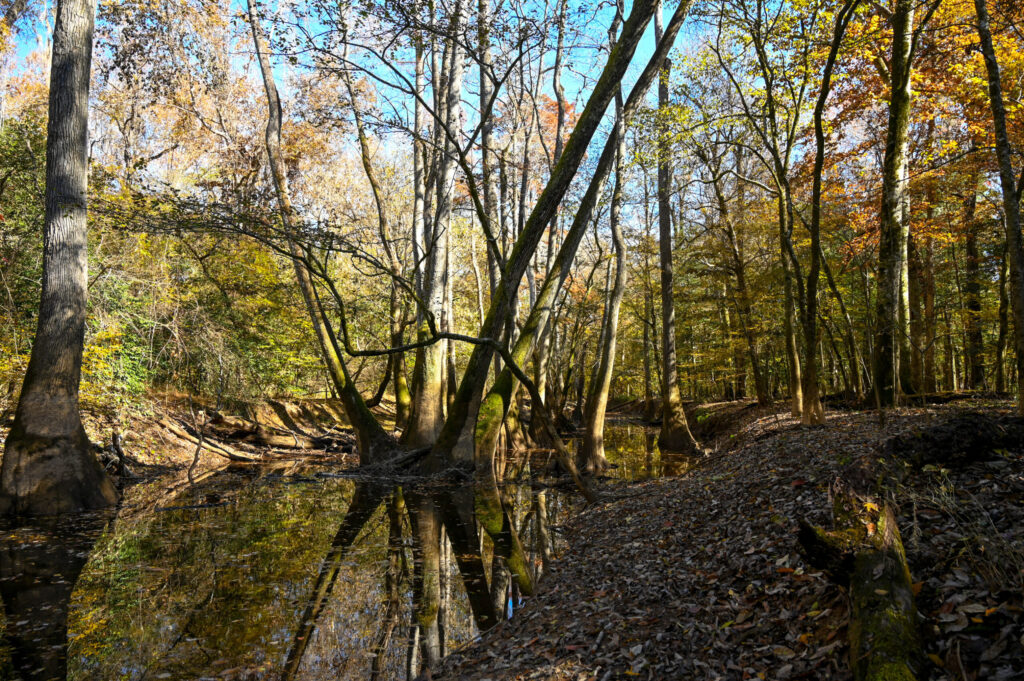USA – Atlantic
USA, we are coming!
After a lavish breakfast at the IHOP (which is the International House of Pancakes), we are looking for our documents to cross the US border and drive to the border in Niagara Falls. However, at first, we drive past the right entrance… Is that a sign? Anyway, we eventually can find the border crossing. The first border guard is not quite friendly. Finally he sends us to the office (our passports are somehow already there) and the border guard there gives us the entry stamp for six months after the routine questions (why do you have a visa, can you afford the trip at all, do you work, where to go next, whereby the address of a campsite is completely sufficient, etc.). After paying the fee of USD 6.00 each, we have officially entered the USA. Accomplished! USA, we are coming! The whole procedure took about 20 min. and they didn’t even want to see the camper.
Happy, we drive on to Allegany State Park in the state of New York. The park ranger office has already closed and we only find a police officer there, who is also responsible for park matters. He gives us a place and says: “That you can pay the camping fee tomorrow after 9 a.m. or if you leave earlier, then you’re gone.” Nice man… It’s the first time since we’ve been out and about that we can eat outside by the campfire and under a starry sky.
Allegany State Park is beautifully situated in the middle of a huge forest. It can be explored both on foot and by car. Since we are in Bear Country now (as we later found out, the whole USA are bear country), with a little luck one can also see black bears.
Elk Country
In this corner of the USA there are not only bears, but also elks. The Elk or Wapiti is the larger relative of the European red deer. In Benezette, these deer are said to be so numerous that they even roam the front gardens. We have to go there! On the way, we happen to pass the Zippo Museum. Since it has been raining all night long and it hasn’t stopped, there are a few visitors. We talk to two gentlemen who are hunters. Not with shotguns, no, with longbows! They are extremely helpful and provide us with maps and tips. After buying a souvenir, we stop at the Visitor Center of Kinzua Bridge State Park. It is a pity that it pours like out of buckets because the bridge would be quite impressive. It was once the tallest and longest railway viaduct in the world before it was almost completely destroyed by a tornado in 2003. Soaking wet and freezing, we drive to Benezette and indeed, already at the village entrance we see an Elk standing in the garden of a house. Also, on the campsite these big animals roam around and do not feel disturbed by us campers. Cool…! Of course, the specialty of the local restaurants is Elkburger. Sorry, dear Elks!
At the Visitor Center in Benezette we receive maps showing Elk observation places. We see many Elk cows. All we have to do is make sure that we are not confused with one on the hiking trails, since it is hunting season.


Halloween a little different
Through very rural areas, we head towards Harrisburg, the capital of Pennsylvania. It’s late afternoon and so we’re looking for a place to spend the night. Since we are close to the famous Appalachian Trail (which stretches over 3,500 km from Georgia to Maine), we consider staying in a parking lot in the woods. As we stand at the side of the road and wonder about the huge blue sign that stands there, someone stops with a pick-up truck and asks if everything is okay. We tell him about our accommodation plans and he explains that we can stay with him on his tree farm and should follow him. Did he just say tree farm? What follows is a huge surprise. We find ourselves in the middle of a forest. Slightly elevated we can see his house with a nostalgic outhouse. We can park our camper on his driveway. The very nice man is called John and he apologizes because he is under a bit of time pressure. He is invited to a Halloween party and has yet to dress up. The best thing we should do is come along right away, then at least no one will recognize him. Our disguise is limited to our hats. With our accent we go through as tourists anyway! The place is very well visited, everyone is somehow dressed up and we spend a very entertaining evening with our host and his friends.
Before we continue to Harrisburg, John stocks us up with fruits (Persimmons and Pawpaw), home-grown radish, self shot deer meat and – the absolute highlight – homemade grape juice. How nice of him! John explains that Harrisburg has the most beautiful Capitol in the country and explains how to get there.
In fact, the Capitol is really very beautiful. It’s also worth a guided tour, where you can learn many interesting things about the history of Pennsylvania.



Amish Country
We are looking forward to Amish Country, the area around Lancaster, which is largely inhabited by the Amish. Lancaster itself is not necessarily worth seeing. The surrounding area, on the other hand, is very beautiful. Succulent green meadows and gently hilly landscapes interspersed with large farms characterize the landscape. From time to time we see a one-horse carriage, so-called buggy, the only transportation of the Amish. The fields are tilled with horse and manpower.
To learn about the Amish way of life, we visit the Amish Farm & House near Lancaster, an Amish farm that was abandoned 40 years ago and has been used as a museum ever since. The tour of the house is very interesting and informative. We learn a lot about the life and ideals of the Amish, who come mainly from southern Germany and also Switzerland. For example, they refuse to take photos of themselves, as this would be an expression of vanity. That’s why in an Amish house you can find only a single mirror, which is necessary for the men to shave. That’s why their dolls don’t have faces. An Amish farm can be recognized by the fact that no power lines lead to the house, as they refuse electricity. Nevertheless, they do not live without light, hot water or refrigerator. They just use propane. We learn that the Amish are very skilled craftsmen and are highly appreciated by the “modern” people (there are just no electricians).
At the Farmers Market we also see Amish women selling their products. Unfortunately, we can not strike a conversation, as they speak English from the outset with visitors. The parking lot, where there are extra buggy parking spaces for the carriages, is quite funny.




History lesson in Philadelphia
We park in the Walmart parking lot in the south of the city. Unfortunately, there are no other possibilities and we do not want to go to a hotel or a guesthouse. To get to the city there are essentially two ways, either on foot or by bus. Since we are not (yet) familiar with the bus system, we march through the Italian Market (there are great cheeses!) and are half an hour later in the city center.
There is just enough time to get the necessary information and visit the Liberty Bell. Due to seasonal reasons, the sights close already at 5 p.m. We spend our time in a bar and later treat ourselves to the world-famous Philly Cheesesteak (not to be confused with the Cheesecake). Given the late hour, we would like to take the bus to the Walmart. We don’t have to pay the fare, because we don’t have the exact amount and the bus driver can’t give us change because he doesn’t carry cash due to the unsafe neighborhood. Aha… Anyway, we arrive safely at our Defender.
Philadelphia has a lot of attractions to offer, so we have a lot to discover. We get a first overview with the Hop-on Hop-off Tour. In addition to historic buildings, the beautiful brownstone houses dating back to the 1950s have also been preserved. We visit the historic Independence Hall (most know it from the movie National Treasure with Nicolas Cage), in whose rooms the Declaration of Independence was signed and in which, in addition to the Declaration of Independence itself, the first US Constitution can be admired. The documents here are nearly 250 years old, which is older than those on display in Washington, D.C. Cool! The only founding father of the United States, who in addition to the Constitution also signed the Declaration of Independence and the Peace Treaty with Great Britain, was Benjamin Franklin. He was not only a statesman, but also an inventor (including the Lightning Conductor), writer and publisher. In Philadelphia, it’s hard to get past a place where Benjamin Franklin isn’t mentioned.
We have both learned our history of the USA from films (such as North and South with Patrick Swayze or The Patriot with Mel Gibson). That’s why one shouldn’t miss out on the Museum of American Revolution as a non-American or if one is not so familiar with American history. It provides a very good overview of the background that led to the American Revolution and thus to the independence of the United States from England and formed the cornerstone of the American Republic.










Delaware’s Coast
We could stay in Philadelphia forever, but let’s see more of the land and that’s how we head to Delaware’s coast. Delaware’s beaches are pretty well known and in summer you don’t seem to get a place on the campsites. Especially Rehoboth Beach is very touristy in summer. Unlike Lewes, which is the access to Henlopen State Park and is really very pretty, you don’t have to have seen the place Rehoboth Beach. All tourist shops and accordingly a lot of junk is sold. In henlopen State Park, which is located directly on one of the beaches, we are lucky and can get a nice place for three nights. The Campinplatz is located in the forest and offers protection from the summer heat. The beach is only a few minutes walk away.
One of the attractions in the park is Fort Miles, built during World War II to protect the bay from enemy attacks. The bunker was built into the dune or better, the dune was removed, the bunker was built and the dune was re-filled over it. Incredibly but true, the dune is the highest coastal elevation between Maine and South Carolina!





America’s capital
We didn’t regret going south via New York City via Philadelphia and Washington, D.C. Actually, we would have liked to stay in Greenbelt Park in a relative proximity to the city, as this would have been a cheap alternative to private campsites or guesthouses. Unfortunately the park is closed for renovation and so we book a BnB.
We are very impressed that not only the sights but also all the museums along the National Mall (this is the huge area between the Capitol and the Lincoln Memorial are free. In glorious weather, we leave the entire area, which is about 4.8 km long and about 500 m wide. From the Washington Monument, the white obelisk, you have a great view over the city. Unfortunately, we can only photograph the White House from very far away, because the barrier is being pulled further and further. So it’s not exactly such an impressive phenomenon in contrast to the Capitol. We can also look at this up close. What is exciting is that at the time when we are in town, the first impeachment hearings are taking place in Congress.
There is just enough time left to look at the National Museum of Natural History, whose exhibitions are immensely diverse and include the Hope Diamond (the largest cut blue diamond) and the entrance area of the National Air and Space Museum. Since I have my sack knife with me by mistake, at least I am not allowed in, to the chagrin of Fabian. I told him to leave his sack knife in the camper. Sorry… At least he could watch the Spirit of St. Louis from below, as it is in the entrance area.







From Shenandoah National Park to Blue Ridge Parkway
Skyline Drive in Shenandoah National Park is nearly 170 km long and runs along the ridge of the Blue Ridge Mountains. From nearly 70 viewpoints along the road alone, you have impressive views of the Shenandoah Valley, the Shenandoah River and the rolling hills in the distance that shimmer mystical blue in the twilight.
Directly to Skyline Drive is the Blue Ridge Parkway, which is nearly 755 km long and stretches across two states before ending in the Great Smoky Mountains National Park. The Blue Ridge Parkway is not only very versatile in terms of landscape, but there are also a lot to see. There is, for example, the James River, the largest river in Virginia, where much-needed food could be transported more quickly to the settlers in the west thanks to the lock there. Or Mabry Mills, a mill built in the 1910s by Ed Mabry and his wife so he could grind the grain for the surrounding farmers. The mill was restored in 1945 by the park authority and is one of the most popular photo-ujets of the whole parkway, beautifully located by a stream and surrounded by trees. Also worth visiting is the Moses H Cone Memorial Park with its beautiful house. The Cones were active in the jeans business and supplied the raw material for Levi’s, among others, and have thus become stone-rich. The entire property is nestled in the hilly landscape and surrounded by forest. There is even a small lake. The park is so large that it is not only suitable for walks but is also large enough for a horseback riding trip. In the house itself there are nice pottery items to buy. We make a detour to Marion (the place is really called that) and buy meat.
A little south on the Blue Ridge Parkway we come to nurseries with small dances. A little later we meet some trucks loaded with Christmas trees and also private vehicles. We learn from a local gentleman that Virginia is the second-largest Christmas tree producer in the United States, behind Oregon or Washington. Aha, therefore the many trees already six weeks before Christmas!
Further south, the landscape is very reminiscent of the Alps. That’s why we really want to visit Little Switzerland. However, the place is not called this because there are many Swiss there, but because of the hilly landscape that reminds of the Swiss Prealps. Until now, we had immense weather luck and were able to discover the parkway in bright autumn weather. Only today, when we want to look at Little Switzerland, the fog is so dense that we don’t really see the landscape or the place. Since there is no more season, the village shop is also closed. This is bad luck and we have no choice but to continue driving. We discover the Museum of North Carolina Minerals on the Parkway and learn about the gemstones that have been mined here and are still going to be.
From time to time we also need internet reception and so we go in Asheville looking for a Starbucks. We pass an outlet mile where there is, among other things, a “Sportsman’s Warehouse”. Sounds exciting, so let’s go in. I’m used to American shops, but hardly in it, I almost fall out of sight: targets in the form of mini-chickens and mini-truth-chickens! Further in the store we come to two huge (and I mean huge!) Walls with weapons (machine guns, long weapons and fist-guns) incl. Ammunition. But the coolest thing is the crossbows. Yes, there is really everything the hunter’s heart desires. We need a while to visit the store. It’s a pity that we don’t need clothing in camouflage colors or a spray that covers the human scent…
At the southern end of the Blue Ridge Parkway, its highest point is located at 6053 feet, about 1844 müM. At the waterrock Knob viewpoint, we have a beautiful view on both sides into the valleys in bright blue skies. A nice finish. The Blue Ridge Parkway is definitely worth a visit!















Great Smoky Mountains National Park
After five days on the Blue Ridge Parkway, we reach the Great Smoky Mountains National Park. In front of the park entrance we are alerted to Elks by an electronic road sign. In fact, they are eating right on the side of the road. They are much bigger than those in Benezette!
If you want to stay in the park, you have to do this at one of the campsites, as wild camping is not allowed. There are no showers throughout the park and not all toilets are open due to the late season, although the full price is to be paid. For this we are compensated with a starry night for this unpleasantness.
The highest point in the national park is the Clingmans Dome at 2024 müM (6643 feet). We are lucky and can actually enjoy the all-round view on the platform, which is not always taken for granted in the smokies. The Smoky Mountains are so called because the huge forest stands and other plants emit so much moisture that there is haze, i.e. smoke. The view is madness! At this point we would like to note that we have walked the Appalachian Trail (you know, the 3,500 km long trail from Georgia to Maine)…. a whole 5 meters!
Then we drive to the Newfound Gap, the state border of North Carolina and Tennessee. There you can stand with one leg North Carolina and with the other in Tennessee.
Our next night we spend at the campsite in Cades Cove, which is also located in the national park. On the way there we see people running around the street with photo cameras. The reason: 2 black bears. Our first bears! They sit between the trees, eat and are not impressed by the crowd. The area around Cades Cove, especially the 9-mile circular trail, is known for bear sightings. We dislocate and almost the necks, because the bears are more likely to be found in the trees at this time of year and eat acorns. But we don’t see any animals other than deer and wild turkeys.






Congaree N.P.
Our next destination is the Congaree National Park and we want to do as much distance as possible. The weather is getting worse and worse and we need an overnight place. In Black Rock Mountain State Park in Georgia, we’ll find what we’re looking for. At an altitude of 1100 müM it would probably be nicely cool in summer compared to the otherwise sultry Georgia, but not in autumn. So that Fabian can cook in the dry, we unfold all the storen we have.

Congaree National Park is the largest surviving stock of original hardwood forests in the southeastern United States. It also houses the largest trees in the United States, which form one of the highest natural roof areas in the world. Nevertheless, it is one of the least visited national parks. Maybe it’s because it’s extremely sultry in summer and you’re literally eaten alive by the mosquitoes. However, we are lucky, because in autumn it is rather cool and no trace of mosquitoes.
Although not a swamp, the national park is only to visit on foot or by canoe. During the Civil War, the fugitive slaves and commanders of the Southern Army, such as the “Swamp Fox” Francis Marion, hid here. So that the visitors do not damage the sensitive flora and do not get wet feet, the paths are partly laid out on wooden walkways. The huge trees are partly in the water and form roots that protrude from the water like dwarves. We almost feel like we are in an enchanted forest as we walk between these giant trees reflected in the water.
We meet two very nice ladies and walk with them through the forest. Our visit takes much longer than planned and we have to hurry to find a suitable place to stay, as overnight stays in the parking lot are not allowed. It passes cotton fields and a lot of forest. In some cases, entire forest areas have been cut down and have to make way for new housing estates. Especially after a visit to the Congaree National Park, one’s heart bleeds at this sight. At Bulls Bay in the Buck Hall Recreation Area and Boat Landing we find a place for the night.




